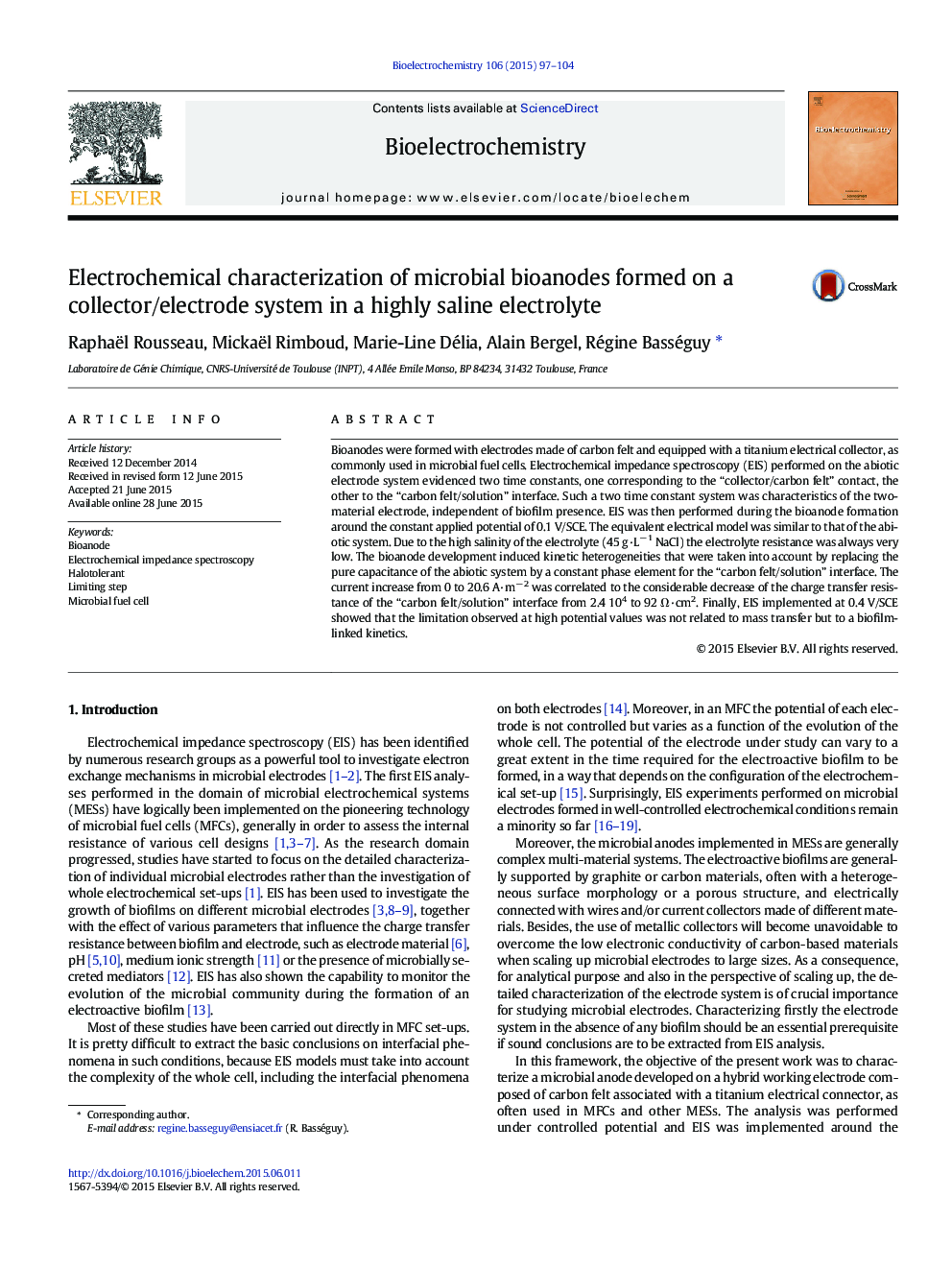| کد مقاله | کد نشریه | سال انتشار | مقاله انگلیسی | نسخه تمام متن |
|---|---|---|---|---|
| 1267866 | 972382 | 2015 | 8 صفحه PDF | دانلود رایگان |
• Carbon felt bioanodes, equipped with a titanium collector, were characterized by EIS.
• Bioanodes were formed at 0.1 V/SCE in medium inoculated by salt marsh sediment.
• Abiotic and biotic EIS graphs are similar in shape: two consecutive capacitive loops.
• The low frequency loop is assigned to charge transfer resistance.
• The current limitation at high potentials was related to the biofilm-linked kinetics.
Bioanodes were formed with electrodes made of carbon felt and equipped with a titanium electrical collector, as commonly used in microbial fuel cells. Electrochemical impedance spectroscopy (EIS) performed on the abiotic electrode system evidenced two time constants, one corresponding to the “collector/carbon felt” contact, the other to the “carbon felt/solution” interface. Such a two time constant system was characteristics of the two-material electrode, independent of biofilm presence. EIS was then performed during the bioanode formation around the constant applied potential of 0.1 V/SCE. The equivalent electrical model was similar to that of the abiotic system. Due to the high salinity of the electrolyte (45 g·L− 1 NaCl) the electrolyte resistance was always very low. The bioanode development induced kinetic heterogeneities that were taken into account by replacing the pure capacitance of the abiotic system by a constant phase element for the “carbon felt/solution” interface. The current increase from 0 to 20.6 A·m− 2 was correlated to the considerable decrease of the charge transfer resistance of the “carbon felt/solution” interface from 2.4 104 to 92 Ω·cm2. Finally, EIS implemented at 0.4 V/SCE showed that the limitation observed at high potential values was not related to mass transfer but to a biofilm-linked kinetics.
Journal: Bioelectrochemistry - Volume 106, Part A, December 2015, Pages 97–104
